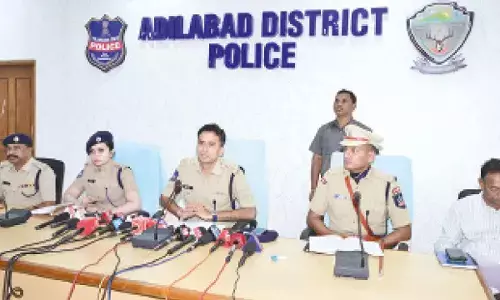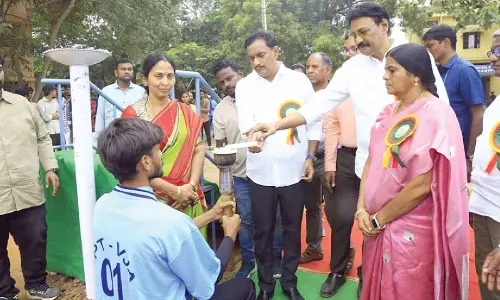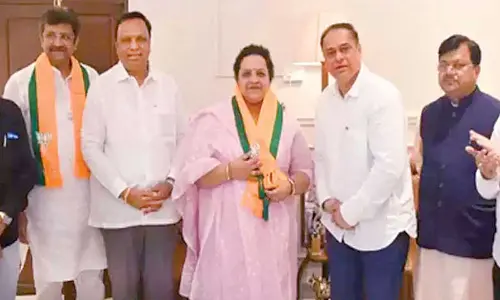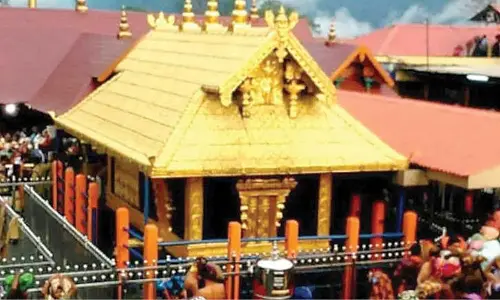Choice of allies, thinking afresh

The admirers and the critics of the communists often find fault with them for their politics of electoral alliances. Alliances with rul- ing class parties have always been a subject of even intense inner party de- bate. But, the Left holds that given their strength, it is imperative for them to forge electoral alliances with other parties for larger political objective.
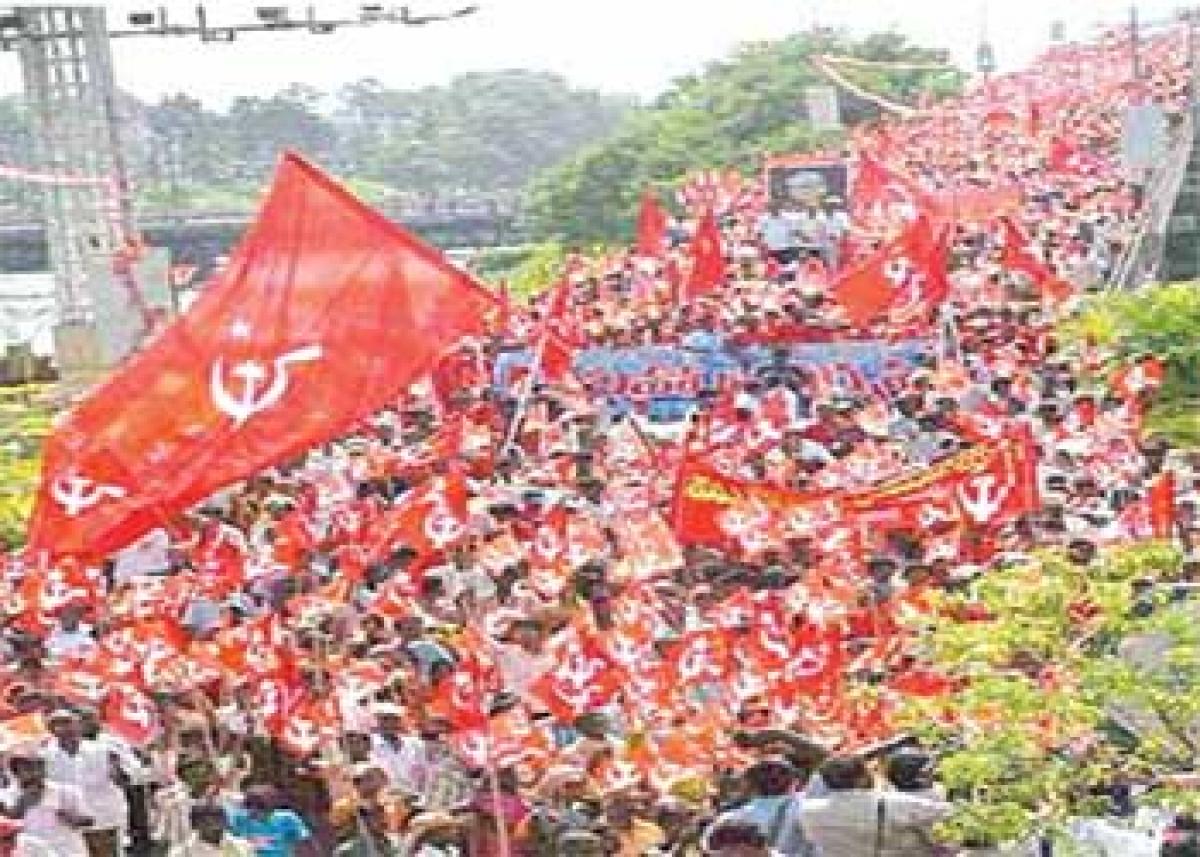 Dwelling at length on the challenges of the Left forces in the country, due to their insistence on rallying secular ’bourgeois’ parties for a national alliance to defeat Congress or BJP at Centre – which hindered the emergence of Left and democratic fronts in States – the CPI (M) has put forth a novel Political and Tactical Line to its cadres, with a view to reviving its fortunes in States
Dwelling at length on the challenges of the Left forces in the country, due to their insistence on rallying secular ’bourgeois’ parties for a national alliance to defeat Congress or BJP at Centre – which hindered the emergence of Left and democratic fronts in States – the CPI (M) has put forth a novel Political and Tactical Line to its cadres, with a view to reviving its fortunes in States
The admirers and the critics of the communists often find fault with them for their politics of electoral alliances. Alliances with rul- ing class parties have always been a subject of even intense inner party de- bate. But, the Left holds that given their strength, it is imperative for them to forge electoral alliances with other parties for larger political objective.
But, the critics of the Left argue that many of alien class influences crept into the communist organisation due to this proximity with other parties, which did not confine to the elections alone. The Left parties continuously or- ganise mass struggles against a gov- ernment, and allies with the party in power at the time of elections.
This raises many questions for which even the Left cadre find difficult to give con- vincing answers. Yet, another impor- tant criticism is that despite having a meager electoral strength, the Left of- ten is obsessed with greater political tasks of defeating or isolating Congress or the BJP at the all India level. On the contrary, the so-called allies of the Left are flexible in their approach to Con- gress or the BJP.
Many of these questions were seri- ously probed by the CPI(M) in its run- up to the party congress to be held in Visakhapatnam in April this year. The Political, Tactical Line document re- leased by the CPI(M) Central Com- mittee for debate in party units comes out with some fresh thinking on the subject. If adopted at the party con- gress, the new Political, Tactical Line of the party would redefine its al- liances in the states including Andhra Pradesh and Telangana.
The document on the Political Tac- tical Line of the CPI(M) in its para 26 says: “The efforts to project a third al- ternative or a Left, democratic and sec- ular alternative at the national level have not been conducive to developing the independent role of the party. The projection of the Left and Democratic Front was hindered by the pursuit of alliances with the secular bourgeois parties either at the national level or state level (at least in the weaker states).
The immediate tactical line of building a third alternative to meet the current situation subordinated the task of putting forward a political and economic programme distinctly and strongly opposed to the policies and practices of the bourgeois-landlord parties. Without putting forth such a programme distinct from the policies and practices of the bourgeois-land- lord parties (including the dominant regional bourgeois party in a state) and conducting struggles and movements on concrete slogans based on it, it will not be possible to win over the masses following the bourgeois political par- ties.”
This was evident from the party’s experience in united Andhra Pradesh also. The CPI(M) had an alliance with the TDP for a long period. This alliance continued independent of whether TDP was in power or not. The party had to sever its ties with TDP only when the latter moved towards the BJP. In the process, the demarcation between politics of TDP and the CPI(M) could not be projected as ef- fectively as it should be.
Having electoral alliance is different from ideological affinity. But, alliances for a long period blurred this differ- ence in the eyes of the people. At times, even the party cadres could not drive this point of difference, stating elec- toral or political compulsions. Thus, the Left could not focus itself as a cred- ible alternative, especially in weaker states. This was also acknowledged in the Draft Political, Tactical line of the CPIM in its para 27.
The document says: “In the stronger states where Left-led fronts exist, going with the smaller bourgeois parties does not de- tract from projecting the Left and democratic programme. But in weaker states, going with the much stronger regional parties hampers the projec- tion of the Left and Democratic Front and programme.” The problem for the party becomes much more complicated when the al- lies are in power.
This was the experi- ence of the party with TDP and Con- gress and it would be the experience with the TRS in Telangana in the time to come. The para 27 of the same doc- ument said, “Often, the struggles and movements of the classes we want to rally for the Left and Democratic Front have to be directed against the State governments run by regional parties. In some states, the regional party is much stronger than the Congress or the BJP and our campaign and strug- gles will have to be directed at times against the dominant regional party.
We have to keep in mind that just as the fronts of the Left and democratic forces advanced in West Bengal, Ker- ala and Tripura, similarly, the tactical line should give direction for the ral- lying of the Left and democratic forces in the other states. An all-India line of rallying the secular bourgeois parties for an alliance often detracts from the work of rallying the Left and demo- cratic forces in the state.”
The CPI(M) had to forge an alliance with TDP in 2009 due to the compul- sions of building up a national plat- form of non-Congress and non-BJP parties. In fact, the CPI (M) and the Left would have electorally benefitted much if they had gone with the Praja Rajyam Party. This was evident from any simple analysis of the voting trends in 2009 General Elections. The new Political, Tactical line of the CPI(M), if adopted at the Visakha- patnam congress, would enable the party to adopt more flexible tactics in choosing allies especially at the state level, not necessarily dictated by na- tional political needs.
The para 28 of the document makes this clear: “The Party can adopt suitable electoral tac- tics in the states for understanding with the regional parties, wherever it is in the Party’s interests and in the in- terests of rallying the Left and demo- cratic forces. It should, however, not be dictated by any all India line to rally the secular bourgeois parties for a na- tional alliance.”
The CPI(M) proposes to have flexi- ble tactics in regard to choice of allies. The para 29 of this document states: “There can be swift changes in the po- litical situation. New contradictions may emerge amongst the bourgeois parties and within them. Political par- ties may undergo changes through splits or coming together to form a new party. Flexible tactics should be evolved to deal with the situation.”








